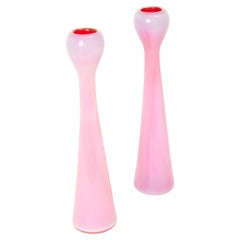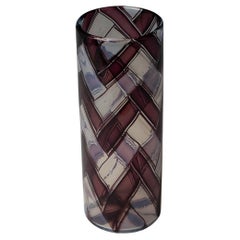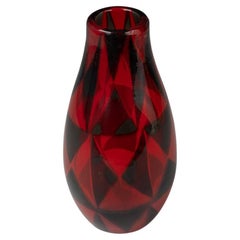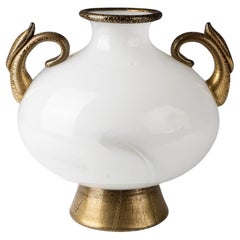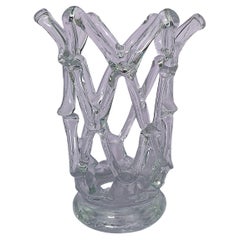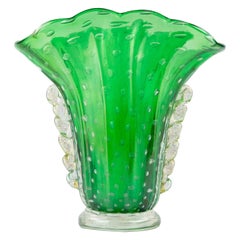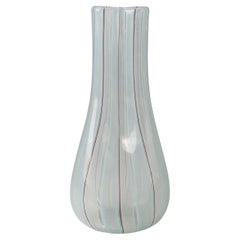Barovier And Toso Vase
Vintage 1960s Italian Mid-Century Modern Vases
Blown Glass
Vintage 1960s Vases
Murano Glass
Vintage 1960s Italian Vases
Murano Glass
Vintage 1970s Italian Vases
Murano Glass
Mid-20th Century Italian Mid-Century Modern Vases
Murano Glass
Vintage 1930s Italian Vases
Art Glass
Vintage 1960s Italian Mid-Century Modern Vases
Glass
Vintage 1960s Italian Vases
Murano Glass
Vintage 1950s Italian Mid-Century Modern Vases
Art Glass
Vintage 1960s Italian Mid-Century Modern Vases
Glass
Mid-20th Century Italian Mid-Century Modern Vases
Art Glass, Murano Glass
Vintage 1950s Italian Mid-Century Modern Vases
Murano Glass
Vintage 1960s Italian Vases
Murano Glass
Vintage 1960s Italian Modern Vases
Art Glass
Vintage 1930s Italian Vases
Murano Glass
Vintage 1930s Italian Vases
Murano Glass
Vintage 1960s Italian Mid-Century Modern Vases
Glass
Vintage 1940s European Vases
Murano Glass
Vintage 1950s Italian Mid-Century Modern Vases
Copper
Vintage 1950s Italian International Style Vases
Murano Glass
Mid-20th Century Mid-Century Modern Vases
Glass
Vintage 1940s European Vases
Murano Glass
Vintage 1980s Italian Post-Modern Vases
Murano Glass
Vintage 1950s Italian International Style Vases
Murano Glass
1990s Vases
Blown Glass
Vintage 1950s Italian Mid-Century Modern Vases
Murano Glass
Vintage 1950s Vases
Murano Glass
Vintage 1950s Italian International Style Vases
Murano Glass
Vintage 1950s Italian Mid-Century Modern Vases
Murano Glass
Vintage 1950s Italian Vases
Glass
Vintage 1950s Italian Vases
Art Glass
Vintage 1950s Italian Mid-Century Modern Vases
Art Glass, Blown Glass, Murano Glass
Vintage 1940s Italian Other Vases
Murano Glass
Vintage 1940s Italian Other Vases
Murano Glass
21st Century and Contemporary Italian Vases
Murano Glass, Art Glass
Vintage 1960s Italian Vases
Murano Glass
Mid-20th Century Italian Mid-Century Modern Vases
Art Glass, Blown Glass, Murano Glass
Mid-20th Century Italian Modern Vases
Art Glass, Murano Glass, Blown Glass
Vintage 1950s Italian Vases
Murano Glass
Vintage 1940s Vases
Murano Glass
Vintage 1930s Italian Mid-Century Modern Vases
Murano Glass
Vintage 1950s Italian Mid-Century Modern Vases
Murano Glass
20th Century Italian Vases
Marble
Vintage 1950s Vases
Murano Glass
Mid-20th Century Italian Mid-Century Modern Vases
Murano Glass
Vintage 1940s Italian Other Vases
Murano Glass
Vintage 1950s European Vases
Murano Glass
Vintage 1980s Italian Modern Vases
Art Glass, Murano Glass
Mid-20th Century Italian Vases
Art Glass
Vintage 1960s Italian Mid-Century Modern Vases
Glass, Murano Glass
Vintage 1960s Art Deco Vases
Murano Glass
Mid-20th Century Italian Mid-Century Modern Vases
Glass, Art Glass, Murano Glass
Vintage 1950s Italian Mid-Century Modern Vases
Murano Glass
Vintage 1980s Italian Modern Vases
Murano Glass
Vintage 1980s Italian Modern Vases
Murano Glass
Vintage 1950s European Vases
Murano Glass
Vintage 1950s European Vases
Murano Glass
Vintage 1980s Italian Mid-Century Modern Vases
Gold, Gold Leaf
- 1
- ...
Barovier And Toso Vase For Sale on 1stDibs
How Much is a Barovier And Toso Vase?
Finding the Right Vases-vessels for You
For thousands of years, vases and vessels have had meaningful functional value in civilizations all over the world. In Ancient Greece, ceramic vessels were used for transporting water and dry goods, holding bouquets of flowers, for storage and more. Outside of utilitarian use, in cities such as Athens, vases were a medium for artistic expression — pottery was a canvas for artists to illustrate their cultures’ unique people, beliefs and more. And pottery skills were handed down from fathers to sons.
Every antique and vintage vase and vessel, from decorative Italian urns to French 19th-century Louis XVI–style lidded vases, carries with it a rich, layered story.
On 1stDibs, there is a vast array of vases and vessels in a variety of colors, sizes and shapes. Our collection features vessels made from delicate materials such as ceramic and glass as well as durable materials like rustproof metals and stone.
A contemporary vase can help introduce an air of elegance to your minimalist space while an antique Chinese jar would make a luxurious addition to an Asian-inspired interior. Alternatively, if you’re looking for a statement piece, consider an Art Deco vase crafted by Italian architect and furniture designer Gio Ponti.
Vases and vessels — be they handmade pots, handblown glass wine bottles or otherwise — are versatile, practical decorative objects, and no matter your particular design preferences, furniture style or color scheme, they can add beauty and warmth to any home. Find yours on 1stDibs today.
Read More
Kazuyo Sejima’s Flowering Tree Blooms Year-Round
The brilliantly simple design turns a modest bouquet into a major statement.
He Wrote ‘Oedipus Rex,’ but Do You Know What He Looked Like?
The Greek tragedian is said to have been handsome in his day.
Cigar Culture Was Once the Peak of Masculinity. Now, It’s a Compelling Curiosity
Even for those who don’t indulge, elegant smoking accessories and audacious art portraying cigar enthusiasts hold a nostalgic allure.
African Travel Plans on Hold? This Ardmore Leopard Vase Brings the Beauty of the Savanna to You
It’s an excellent example of the sought-after ceramics coming out of South Africa’s KwaZulu-Natal province.
With a High-Tech Flagship and Cool Collabs, Lladró Is Breaking the Mold for Porcelain Production
Thanks to its new leadership, the Spanish maker of figurines, busts and lighting is on a mission to update the art of porcelain for the 21st century.
Zoë Powell’s Magnolia 05 Vessel Is Handmade from Clay She Unearthed Herself
The free-form stoneware piece is inspired by the magnolia tree and its associations with home.
8 Ways to Breathe New Life into a Space with Plants
The pair behind the Instagram account @houseplantclub share their tips for making any room of the house gloriously green.
Paris Gallerist Sandy Toupenet Gets Fired Up over 20th-Century Ceramics and Inventive New Makers
Her space on the city’s Left Bank mixes mid-century pieces by the likes of Jean Cocteau and Pablo Picasso with whimsical contemporary creations.
